
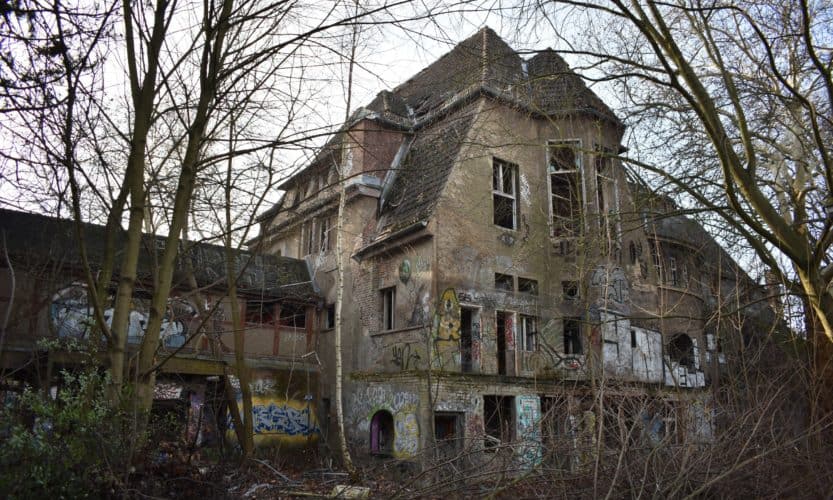
That’s exactly it. I visited an abandoned children’s hospital and I loved it.
Now, I get how this might not seem like something to look forward to on your next city trip. But I had been looking forward to this from the moment I started planning my solo trip to Berlin in February.
As I talk about in the post linked above, I visited an abandoned children’s hospital in Berlin, called Kinderkrankenhaus Weißensee.
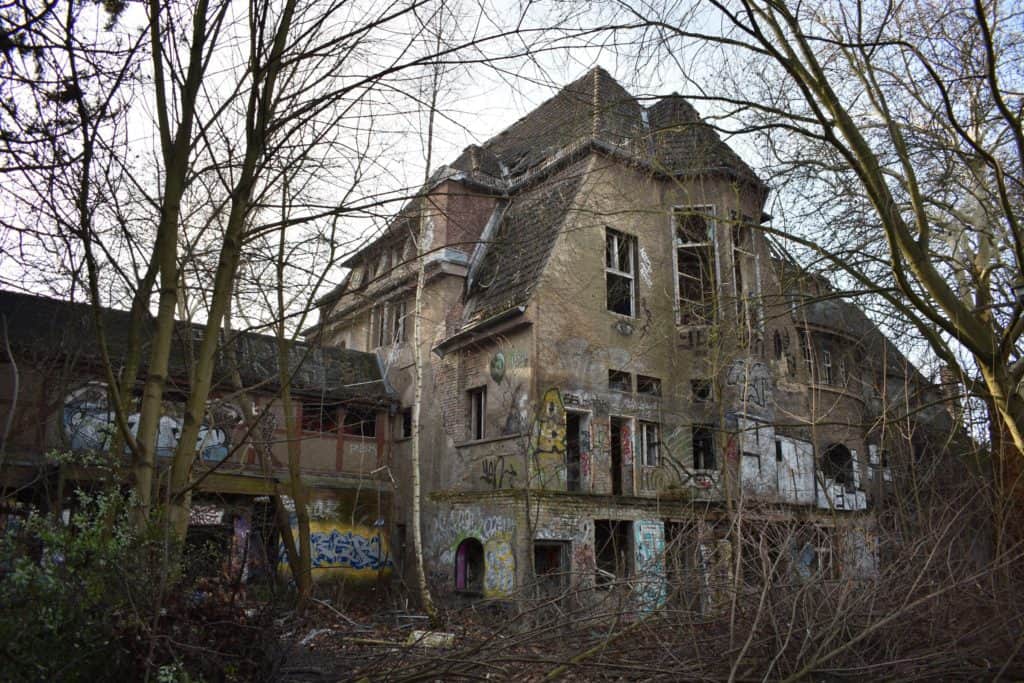
To be fair, I completely get it. I honestly do get why you wouldn’t want to do this.
But hear me out.
As I was preparing my Berlin trip, I browsed through Atlas Obscura (a great website to find amazing not-so-popular things to do all around the world!) and I came across the listing for this hospital.
This website described the building as a “state-of-the-art medical facility from the Imperial era” that has now become “a derelict ruin”.
So, naturally, I wanted to investigate.
After some further research, I stumbled across a Dutch article by Eva from Blackbirds & Blossom, who had also visited Kinderkrankenhaus Weißensee.
Eva took a more art-based approach to her visit, and her article perfectly shows this. It features many gorgeous pictures of the inside of the abandoned children’s hospital.
I decided to combine these two online sources and visit the building myself, paying close attention to both the decaying, abandoned state of the building itself and the graffiti transformation it has recently gone through.
If this blog post inspires you to go to this abandoned children’s hospital yourself, it’s really not as difficult as you might think.
All you have to do is get to a bus/tram stop called Buschallee/Hansastraße. The main bus/tram lines that stop here are bus 259 and trams 12, 27, M4 and M13. You’ll probably end up taking an M4 tram from Alexanderplatz.
As I explained in my Berlin itinerary post, visiting this place is illegal, strictly speaking. It’s fenced off and the city has made some efforts to keep explorers like you out.
Related: Three-day off-the-beaten-track Berlin itinerary for solo travellers (but also for non-solo travellers, honestly)
But, honestly, the fences really aren’t that big of an obstacle if you’re dedicated enough.
Walk along the street until you reach the entrance to an athletic field called ‘Stadion Buschallee’ (see picture).
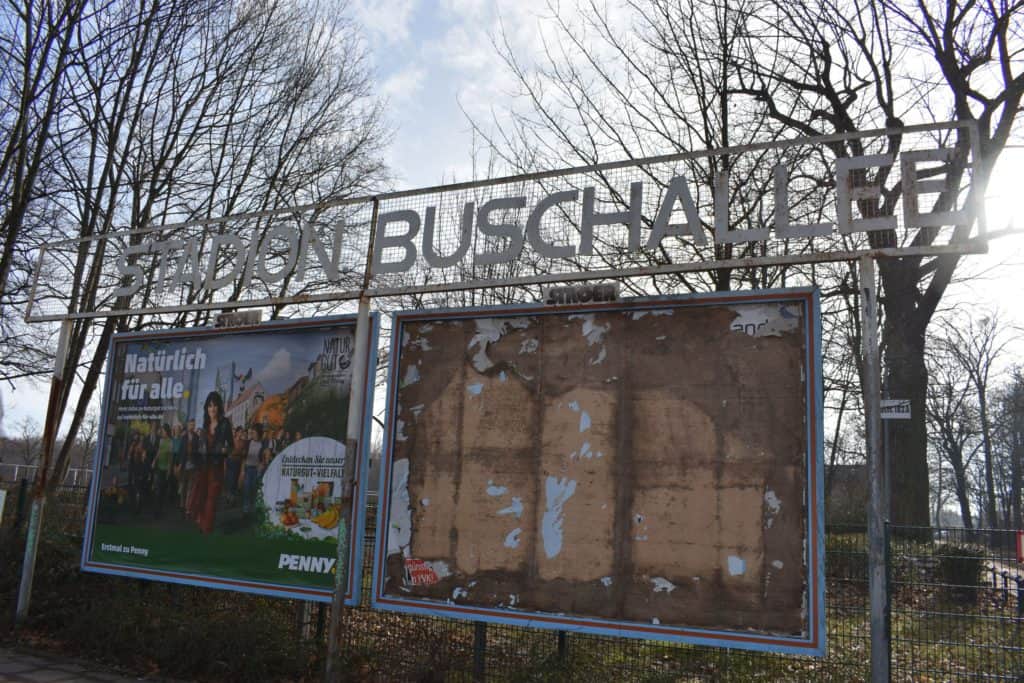
You didn’t hear this from me, though.
Once you’ve gotten over the fence, the urban exploration can begin. This is where you get carte blanche to do anything you desire.
I was very excited to visit this place. I had been looking forward to this for a few weeks, ever since I found out that it was a possibility.
On my way to the hospital, I was joined in the tram by a group of schoolchildren. At about 9 am. Luckily, I had had coffee earlier that day and I had some good Spotify playlists, so I didn’t care too much.
The first nerve-wracking moment of the day was trying to find a way in. The place that I can only assume used to be the main entrance was covered up by wooden plates because too many people were trying to get in. It was impossible to climb these plates, so I kept looking for other options.
And then I found the metal fence just around the corner that I mentioned earlier. Fortunately, this fence was easier to climb – although I can’t have looked very flattering doing it.
Bottom line, I got in.
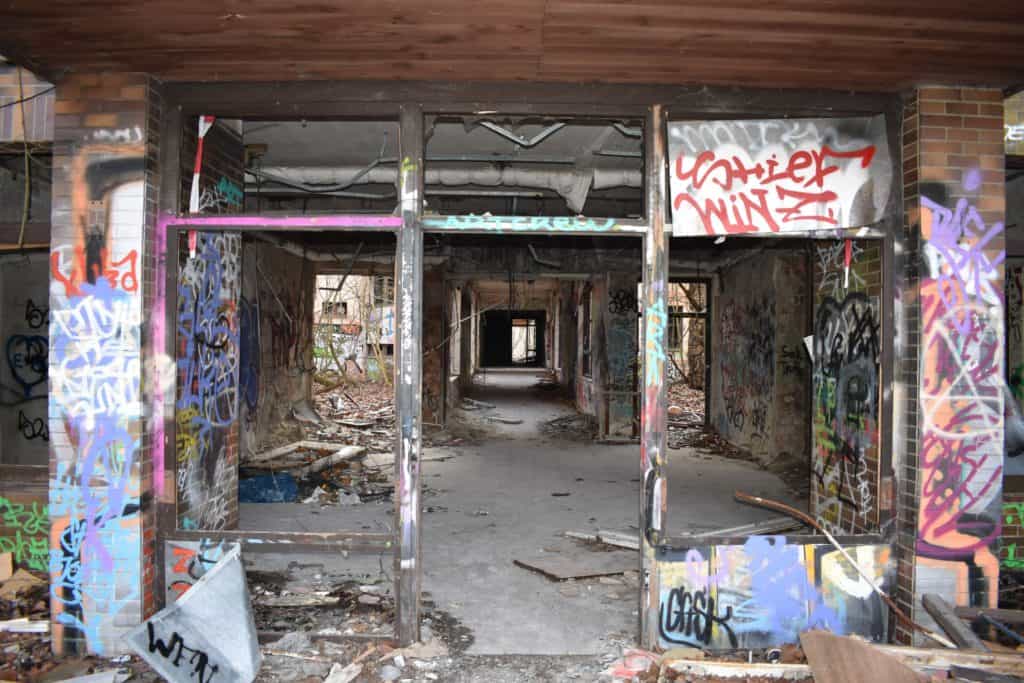
The next terrifying moment was actually taking the first step inside the building. I had no idea if any other people were in there, I didn’t know how well-preserved the floor and walls were (read: I was afraid I would fall through the floor) and I didn’t really know what to expect.
But again, I fought the fear and I went inside. I immediately saw half-wrecked stairs and wallpaper that was peeling off.
I occasionally had to use my phone’s flashlight because – obviously – there were no lights.
After a few minutes, I regained my confidence and started actually exploring the hospital buildings.
At first, what I saw didn’t impress me very much, because the first few rooms I saw didn’t have any spectacular or thought-provoking art (you can find some examples of that below). However, the further I ventured into the abandoned children’s hospital, the more impressive the things I saw were.
Note: I’m definitely not saying that every room you enter will have graffiti masterpieces. In fact, you will mostly see meaningless graffiti tags that don’t seem to contribute anything to the building. I’m definitely not trying to discourage you from visiting this place, but I’m just saying it like it is to avoid disappointment.
But then again, the scarcity of truly beautiful graffiti only makes finding the impressive pieces that much more worthwhile, doesn’t it?
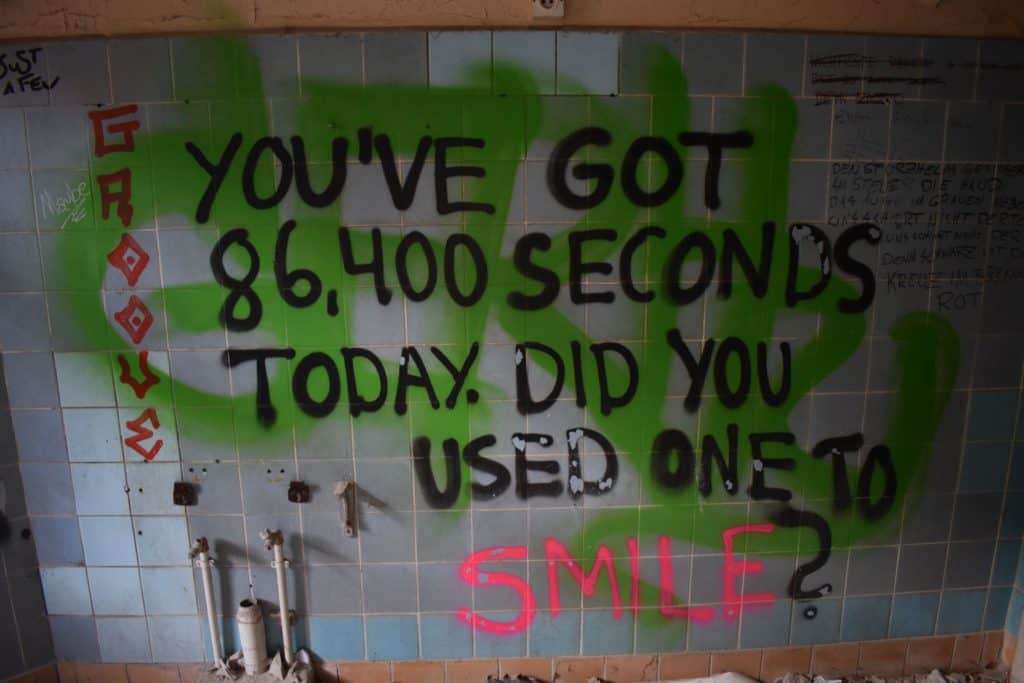
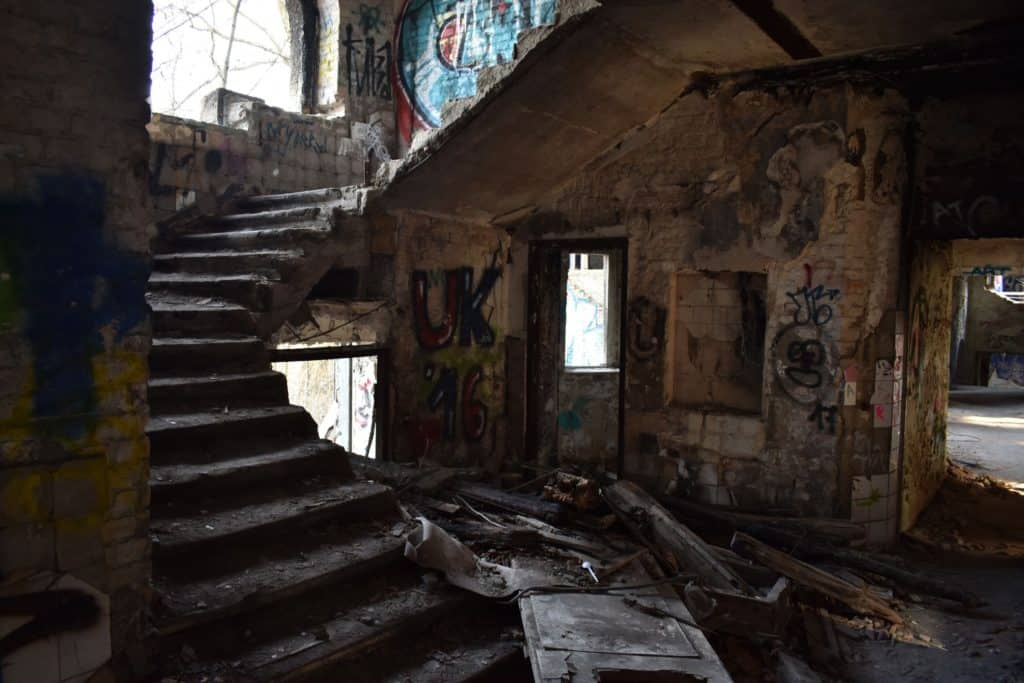
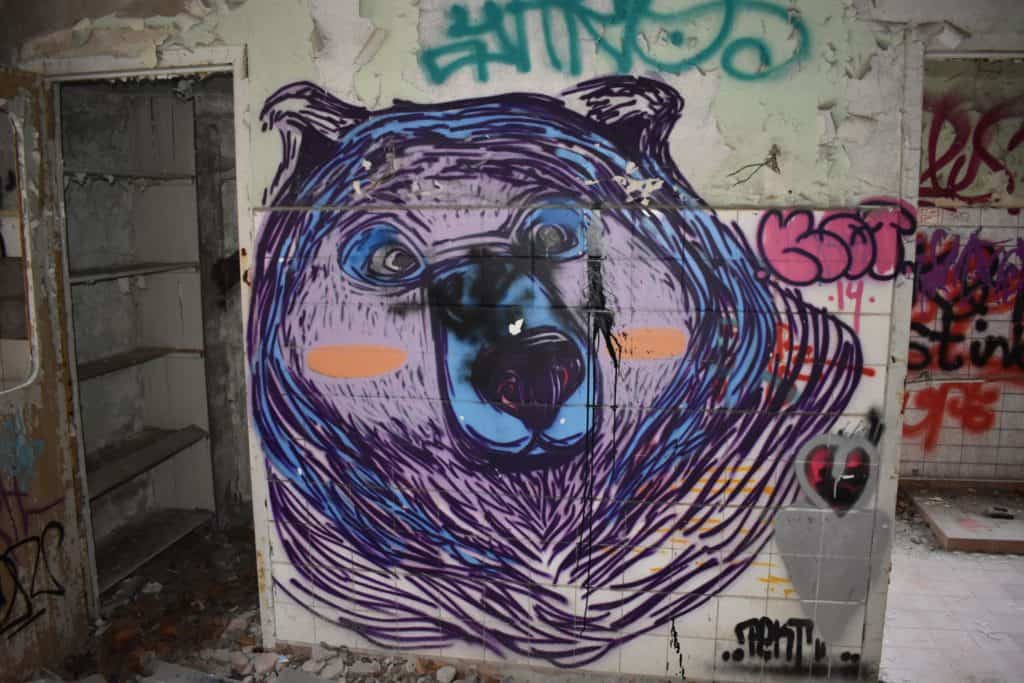
An hour or so later, I went back outside and started walking towards one of the other buildings. Until I saw a man on the other side of the grounds.
Since I didn’t get a good look at him, I had no idea whether this man was another explorer like myself, he worked there, he worked for law enforcement, or something else entirely.
I decided that it was better to be safe than sorry and I got the hell out of there.
Unfortunately, that also means that I wasn’t able to see the rooms I was most excited about, like the cupcake room or the flower room (both of which can be found in Eva’s blog post I previously mentioned).
I found my way back to the fence I had jumped over to enter the premises and jumped (well, crawled) over it again to leave. I then made my way to the bus stop and got back to the city centre without any further issues.
Have you ever done something like this? How did it go?
Thanks for reading!
-S
PIN IT!


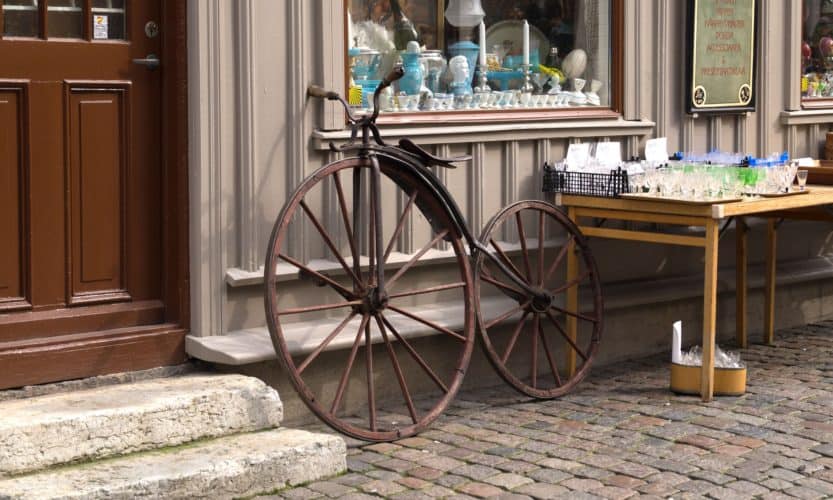
Göteborg – also known as Gothenburg – is too often overlooked in Scandinavian travel itineraries. However, as the second-biggest city in Sweden, it boasts over 800,000 inhabitants. So there must be some things to do there, right?
If Göteborg isn’t on your bucket list yet, you should put it on there. Here’s why.
Note: I got these insights from Margot, who was in this magnificent Swedish city between August 2016 and January 2017 for her Erasmus stay. You can take a look at her beautiful pictures on Instagram. Margot, if you’re reading this: thank you so much for giving me your inside tips about Göteborg and for allowing me to adapt and use the information you gave me for this post!
Without any further ado, let’s get right into it.
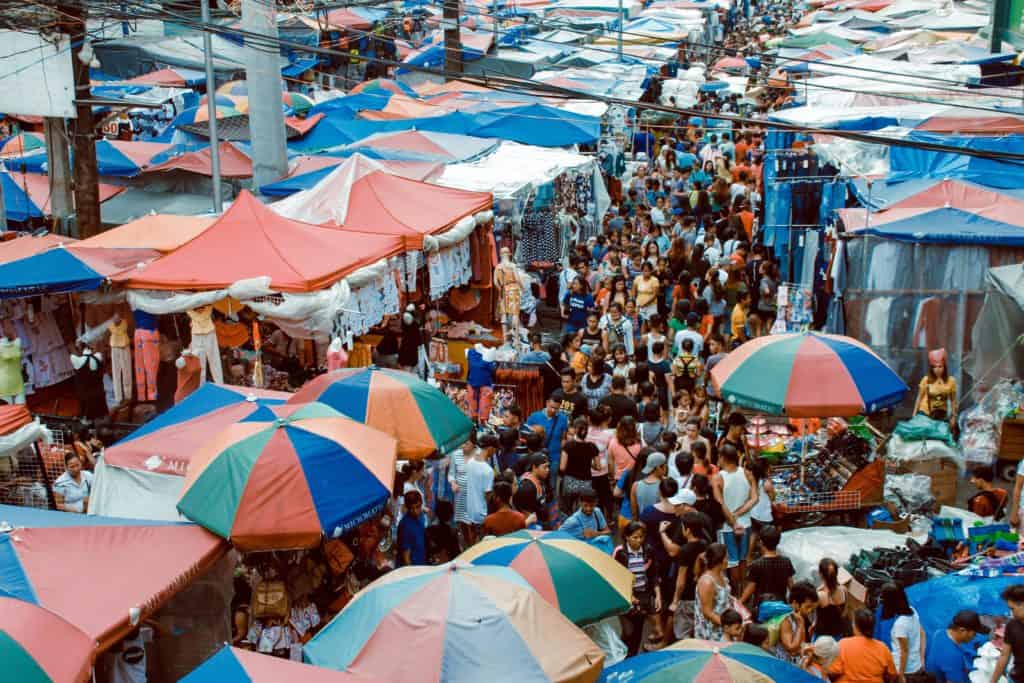
If there’s one thing the Swedish are good at – besides cinnamon rolls – it’s the flea markets. One way or another, it’s always much easier than you’d expect to find beautiful, original things at a great price.
There is a flea market where people sell things out of the trunk of their cars in Slottskogen between April and October. This flea market is known as the Drive-In-Loppis.
A suburb of Göteburg called Utby hosts the Utby Promenadloppis at the end of August, which is a lot of fun because the whole neighbourhood joins in and holds a little flea market in their garden.
On the last Sunday of May, there’s a megaloppis in Majorna, which is very much worth a visit as well.
Göteborg is preparing for its 400th birthday (yes, 400!). That’s going to happen in 2021. One of the festive projects that the city is working on is the construction of the Jubileumsparken. Right now, there’s already an outdoor swimming pool and a sauna which is available free of charge (and which is one of the architectural highlights of the park). If you want to spend some time in the sauna, you do have to make a reservation.
Unless you’re a big fan of ice hockey, you probably shouldn’t do this every week. However, it can be a lot of fun to attend an ice hockey game. The Swedish are obsessed with ice hockey and every game turns into a spectacle. Also, you’ll score a lot of bonus points if you can chat to the Göteborgare about the Frölunda Indians or the Växjö Lakers.
The bottom floor of the modern and pleasant Göteborg city library at Götaplatsen hosts a large collection of board games. There are chairs and tables for you to play a game of chess, Scrabble, or whatever tickles your fancy. Employees are there to help you and explain the rules to you. You can also do some good old console gaming in the same room. Fun fact: the library is open until 9 pm on weekdays (6 pm on the weekend). There’s a nice little cafe on the first floor for lunch and fika.
Liseberg is Scandinavia’s biggest amusement park. It’s especially fun to visit during the Christmas period and around Halloween. It’s decorated in a very retro way, which makes you feel like you’re in a Swedish film from the fifties.
Göteborg is not only for people who want to chill in the park and spend some time in a sauna, though. It also has many things, like museums and art galleries, to offer for those travellers looking for a more cultured trip.
This museum, which literally translates to “Art Museum of Göteborg”, has a very varied range of temporary modern exhibitions (think Bruce Nauman and Tove Jansson). There is also a permanent collection, which includes an entire floor dedicated to Scandinavian art. Inside of the museum, there is something called the Hasselblad Center, displaying different works of photography.
Alongside the museum, you can find Göteborgs Konsthall, where more modern art is displayed.
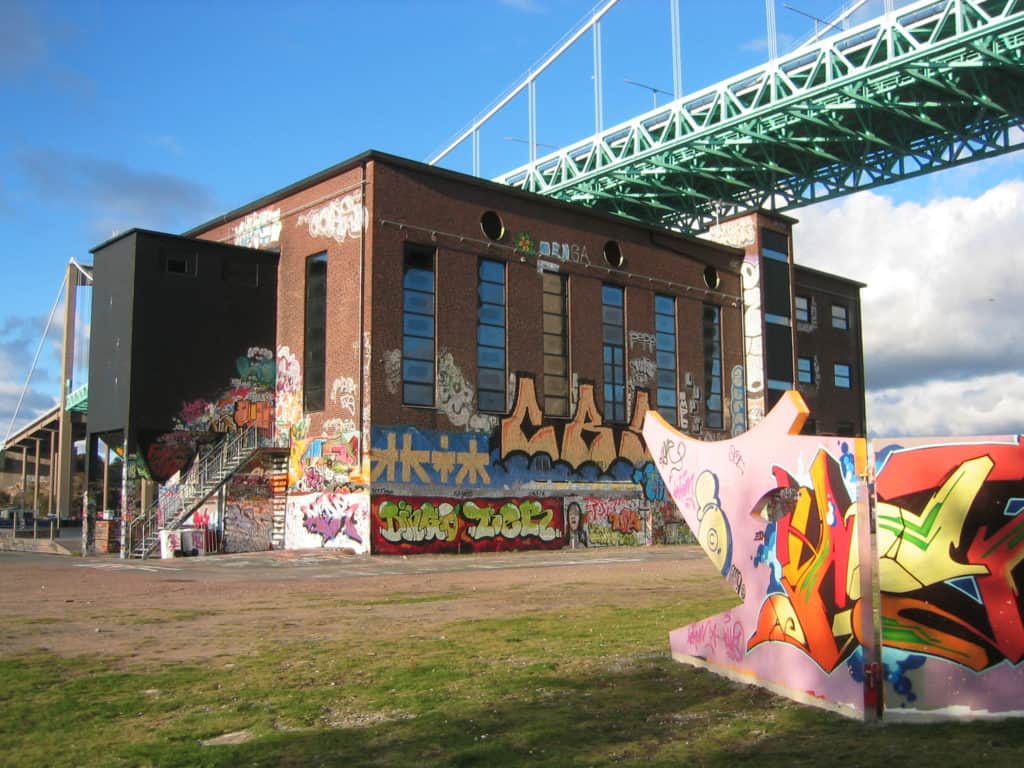
Photo credit: rodasten.com
Art gallery Röda Sten, located right under the green Älvsborgsbron bridge, is an art gallery that often displays modern art exhibitions about relevant, contemporary themes. Every week, the gallery also organises a free workshop for art enthusiasts under 26. There is also a restaurant and cafe inside – if there isn’t too much wind, the terrace is located perfectly along the river banks.
This museum is for anyone who wants to learn more about the history of Göteborg. Margot, for example, saw an exhibition about Göteborg as a city of music, and she learnt that the city used to be the jazz centre of Sweden and that Håkan Hellström is far from the only Swedish musician worth learning about.
Since eating, drinking and fika are very important to the Swedish people, the following list of cafes, restaurants, bistros and other cosy places to go will be quite extensive. As such, there will not be any explanation as to why they’re in this post, because they really don’t even need any explanation. The places are listed by neighbourhood.
Are you a nature enthusiast? Do you get energy from hanging out in green places and breathing fresh air? If so, Göteborg is the perfect place for you. It has plenty of nature-related things to do and visit. In this section, I’ll give you a selection of them.
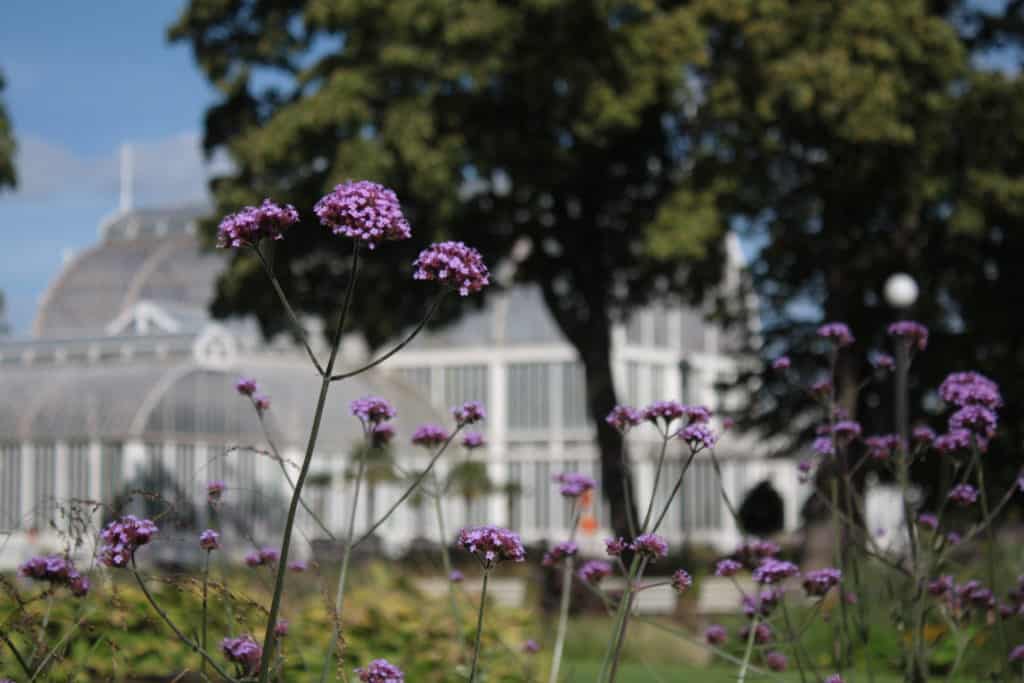
Photo by Margot
Palmhuset is an impressive 19th-century greenhouse right in the city centre. It’s incredibly popular among wedding planners and Instagrammers (seriously, just check the hashtag #palmhuset). In the central part of the greenhouse, you’ll find a stairway to an elevated platform where you can enjoy your home-made lunch in peace, surrounded by palm leaves. This platform can be a godsend on cold, rainy days when you just want to have an affordable lunch in an interesting location.
The park that houses Palmhuset is called Trädgårdsföreningen. Talk about a tongue twister. This park also has a rose garden, where you can find the Rosenkaféet, which also serves lunch and drinks.
Taking tram 11 heading toward Saltholmen will take you right to the quay where ferries go toward the Göteborg archipelago (Swedish: Göteborgs skärgård). The ferries are a part of the regular public transport network, so your season ticket, day ticket or three-day combo ticket should cover it. A regular ticket is valid for 90 minutes, which should get you a one-way trip, including the tram and the ferry, provided you have a little bit of luck with your timing. You can find more information about getting to the archipelago on the Swedish public transport website.
During the summer, you can take a trip to the archipelago to go swimming, but be cautious of the jellyfish. During the winter, you can go there to get some (really) fresh air. Styrsö, one of the main islands, has those pretty Pippi Longstocking houses (see pictures), as well as a vantage point called Stora Rös Café Öbergska at the Bratten quay.
Vrångö is a calmer island with nature reserves on either side (Norra & Södra Slingan), fit for short hikes with splendid views. On the east side of Norra Slingan, there’s a small sandy beach. Vrångö also has a vantage point called Lotsutkiken.
Fun fact: the inhabitants of this archipelago pretty much only move around using golf carts or motorised carrier cycles. And, if you’re lucky, you might even get to spot some wild animals.
Slottsskogen is Göteborg’s main park, featuring a free zoo that includes animals such as penguins and elk. Moreover, Slottsskogen is the best place to see the result of the Swedish paternity leave policy, as you can easily spot groups of men with baby buggies. A popular sport in this park is roller skiing, the off-snow equivalent of cross-country skiing (according to Wikipedia, at least).
Right across the street from Slottsskogen, you can find Göteborg’s botanical garden, entitled Göteborgs botaniska trädgård. It’s one of the biggest botanical gardens in Europe.
The gardens feature many small paths for visitors to explore, as well as thousands of species of plants to marvel at. Eventually, the paths will take you to the entrance of the nature reserve called Änggårdsbergen, where you can continue your hike. You could eventually make your way to Guldhedstornets Kafé, a fika place located on the top floor of a water tower that is still in use nowadays. This cafe, because of its high altitude, offers visitors a panorama view of the city.
At the east side of Göteborg is Delsjöområdet, a large nature reserve that is known for its many trees. Among local residents, it’s a popular place to go for a swim when temperatures allow it. Within this nature reserve, there are two lakes: Stora Delsjön and Lilla Delsjön. These lakes are easily accessible through public transport, although you’ll have to walk a fair bit to actually get there.
In the middle of Stora Delsjön, there is a rock right below the water surface. If you want to get an Instagram shot of you walking on water, this is your best bet. The two lakes are also the most accessible location to do some kayaking or hiking near the city.
Just like most other major cities around the world, Göteborg is full of history and interesting architectural concoctions. In the next part of this blog post, I’ll share some architectural places worth visiting with you.
The best vantage points to see the city itself are called Masthuggsberget and Ramberget. Both come with a considerable hike, but they’re definitely worth the effort. While both are located just outside of the city, Masthuggsberget is still a bit closer and will give you the most detailled view over Göteborg.
There are rocks around the church (Masthuggskyrkan) at Masthuggsberget, where you can take a walk and get a 360 degree view of the city.
Visiting Ramberget is very much recommended when there are fireworks along the river Göta älv. At that time, you’ll be able to see the entire skyline of Göteborg with fireworks in the background.
Skansen Kronan is also a popular vantage point due to its views and because it offers visitors an impressive look at the Oskar Fredriks kyrka (see below).
The most breathtaking walk in Göteborg has got to be the Göta Älv quay. Start your walk at Lilla Bommen (a very unique skyscraper that has been nicknamed “the lipstick”) and end in Maritiman (a free open-air museum with all kinds of old war ships), passing several landmarks on the way.
Those landmarks include Barken Viking (an old sailing ship), Göteborgs Gästhamn (old, red storage spaces where cafes and other hip spots can be found nowadays), Göteborgsoperan and some charming buildings with the typical copper-green towers.
Vasagatan is an avenue, named after king Gustav Vasa, filled with atypical but graceful late 19th century to early 20th century villas. At the junction of this street and Viktoriagatan, you will find a house called Tomtehuset, which roughly translates to “gnome house”. The house earned this name because of the mural paintings depicting gnomes as the first occupants of the house (an architect, a printer and a photographer).
In the middle of the street, there’s a walkway where you can go for a leisurely walk. If you do that, you’ll also pass the central university library, where you can go inside and take a quick look at the big reading room. The streets surrounding Vasagatan, such as Storgatan and Engelbreksgatan, also have some houses worth taking a look at. Outside the city centre, similar architecture can be found in the streets Berzeliigatan and Södra Vägen.
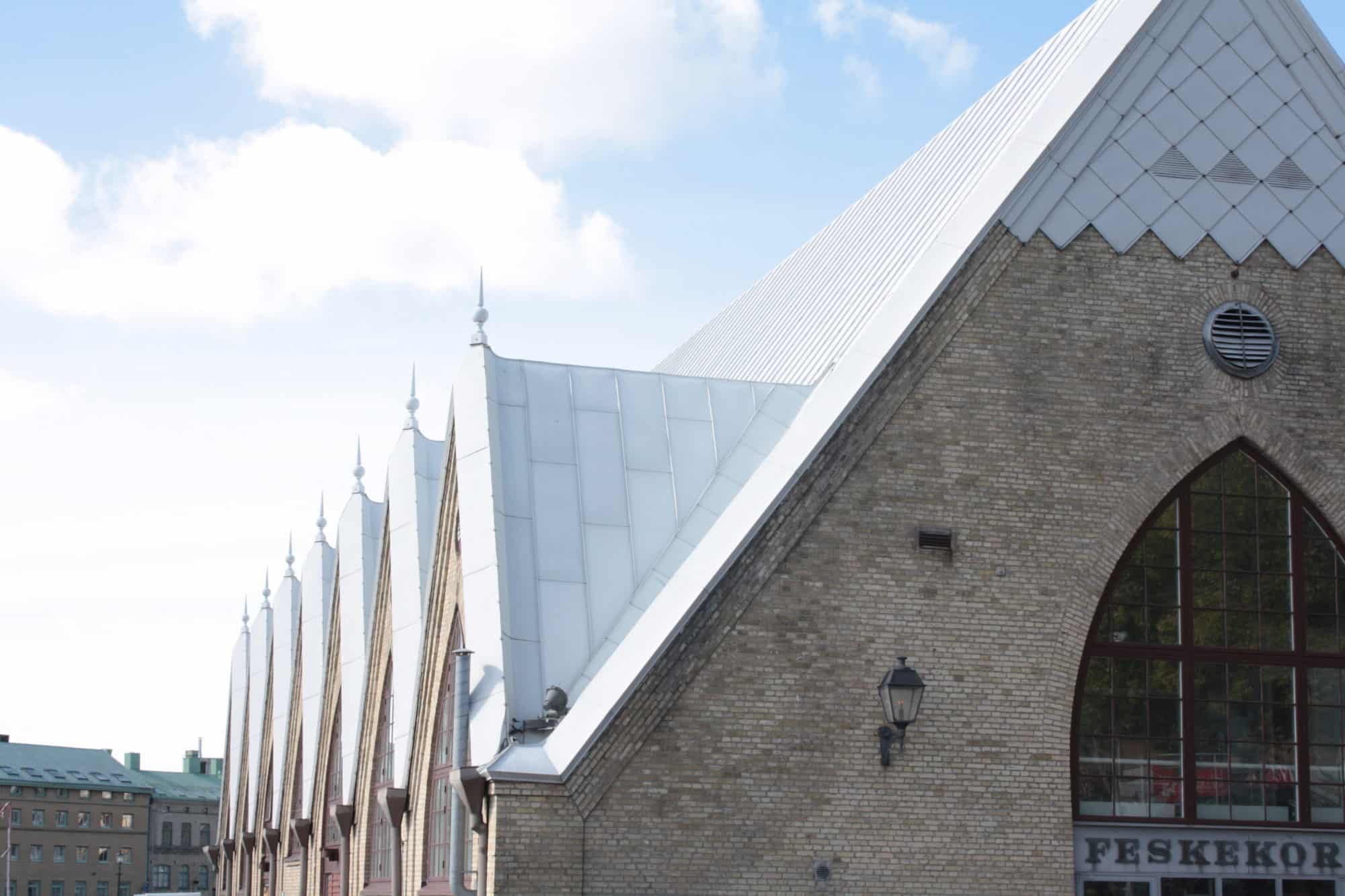 Feskekôrka is a word in Göteborg’s dialect, translated into English as “Fish church” – a very logical name for an indoor fish and shellfish market that looks like a church. It’s one of Göteborg’s most famous tourist attractions and it’s very likely that this is the only one that might ring a bell.
Feskekôrka is a word in Göteborg’s dialect, translated into English as “Fish church” – a very logical name for an indoor fish and shellfish market that looks like a church. It’s one of Göteborg’s most famous tourist attractions and it’s very likely that this is the only one that might ring a bell.
This is a beautiful church with a dark-red facade and copper-green and golden details. You’ll probably come along this church on your way to Masthuggsberget or you can see it from Skansen Kronan.
Göteborg is not only for architecture and nature enthusiasts, though. If you just want to find some good stores to hang out and buy some things, here’s a list of the best shops in Göteborg.
The most common shopping locations in Göteborg are without a doubt Nordstan (the biggest mall in all of Scandinavia, mostly featuring chain stores) and Inom Vallgraven (a larger area; the closer you get to Nordstan, the more chains you’ll come across). If you want to find stores that are less well-known to the general public, you might want to check out Magasinsgatan. For something between the two, you can probably get your fix in the streets between Östra and Västra Hamngatan.
For artisanal products, you’ll have to be in Kronhusbodarna (yellow houses around Kronhuset, Göteborg’s oldest building) and Haga (the old working-class neighbourhood; now a very touristy but convivial street with coffee shops and other stores). These neighbourhoods are great if you’re looking to buy souvenirs for friends back home (like winter sweaters and slippers).
Typical Swedish delicacies can be found in Saluhallen, the indoor market, or in one of the Kronhusbodarna, a candy store called Göteborgs Choklad & Karamellbutik.
Though Göteborg may have a lot to offer to its visitors, you might still want to take a look at the surrounding areas. That’s where a day trip can come in handy.
Marstrand is a small coastal city just north of Göteborg. Even more north are Fiskebäckskil, Lysekil and Fjällbacka, which might be nice places to combine for a day trip from Göteborg. It should take you about an hour to get from Göteborg to Marstrand using public transport.
Tjolohölms Slott is a castle located right along the coast, about 40 minutes south of Göteborg. Fun fact: this castle was used as a set for Lars von Trier’s film Melancholia.
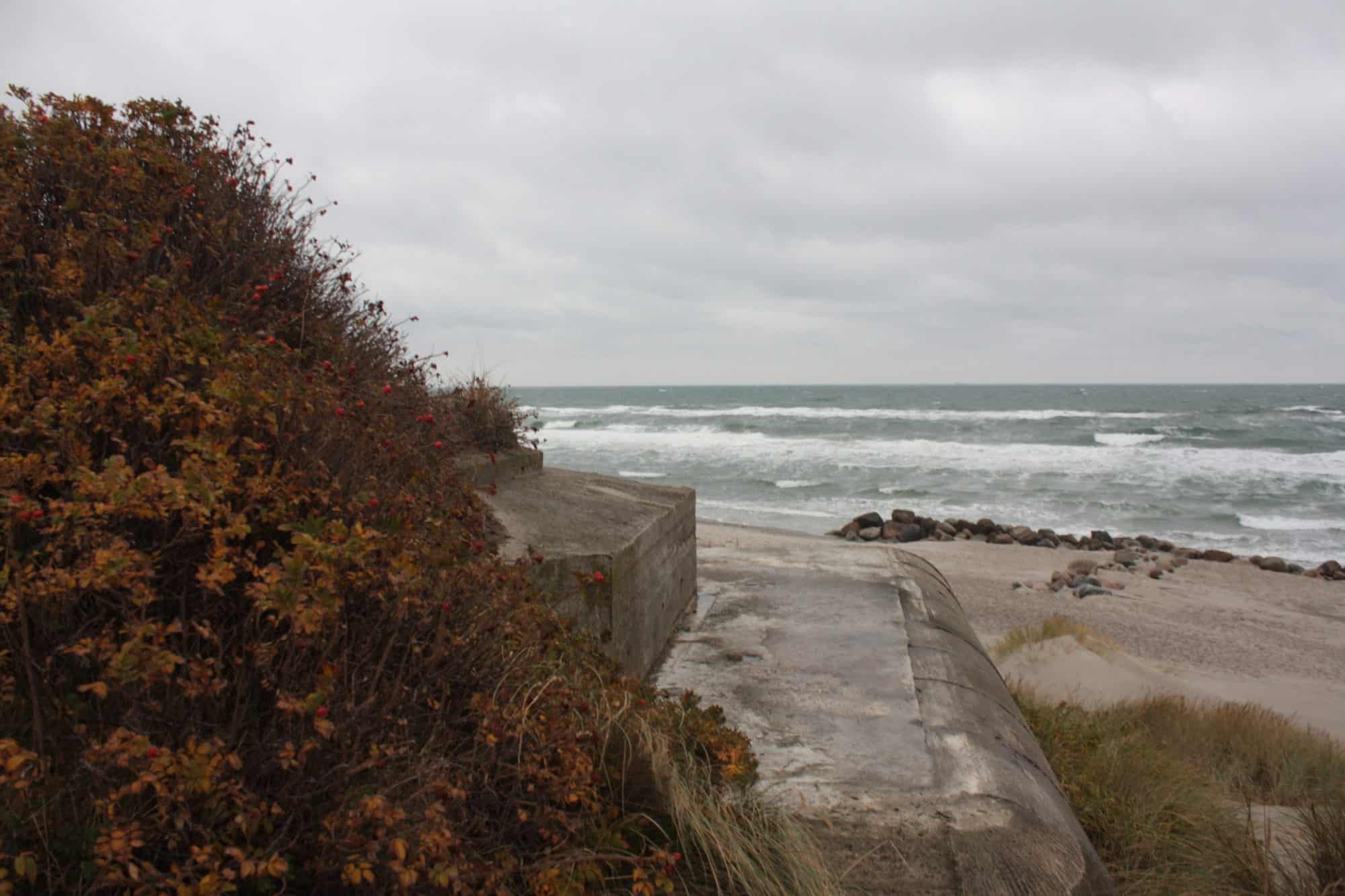
Visiting Skagen on a day trip from Göteborg is tough, but it’s so worth it. The ferry will take you to Frederikshavn for a very cheap price (if you’re not travelling by car), where you can take a train to the very north of Denmark. There, you can take the Sandormen (a tractor-slash-bus) to the place where Kattegat and Skagerrak meet and spot seals.
Skagen is also famous as the central city of the Skagen Painters (including Krøyer), whose paintings can be visited in Skagens Museum.
Last, but not least, you can also visit “den tilsandede kirke“, which literally translates to “the sand-covered church”. The only part of this church that is still visible today is its tower, while the rest of the building is covered in dune sand.
That was it from me. If you’re going to Göteborg soon, I’d love to hear from you on Twitter or Instagram, and I’m sure Margot would, too.
Once again, Margot, thank you so much for letting me use your insider tips and insights to create this guide for people who want to visit Göteborg.
Thanks for reading!
-S
PIN IT!
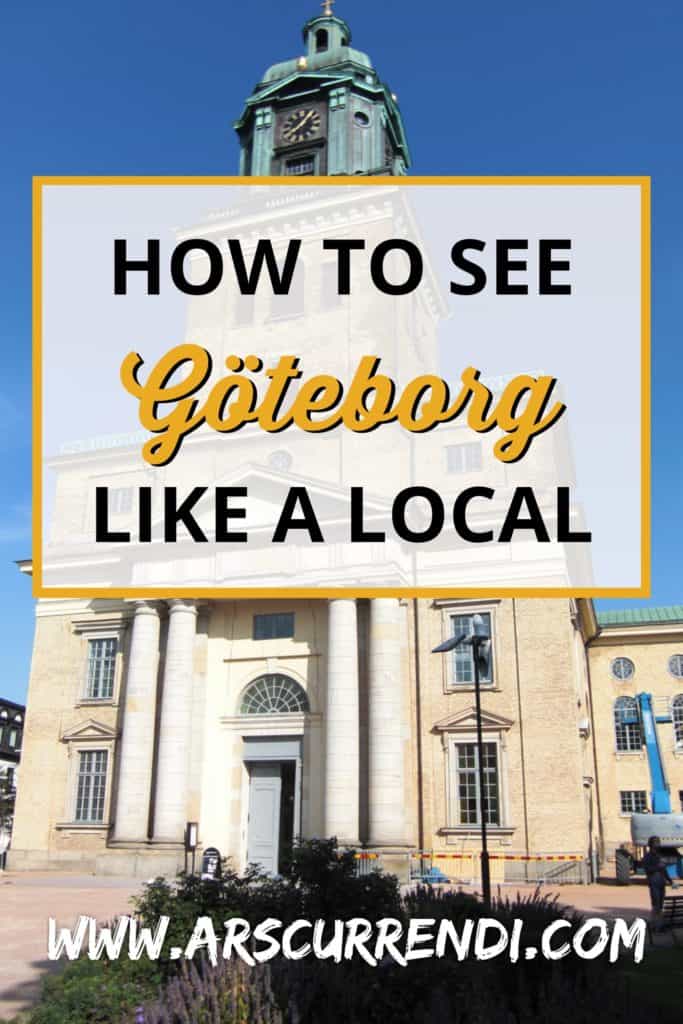
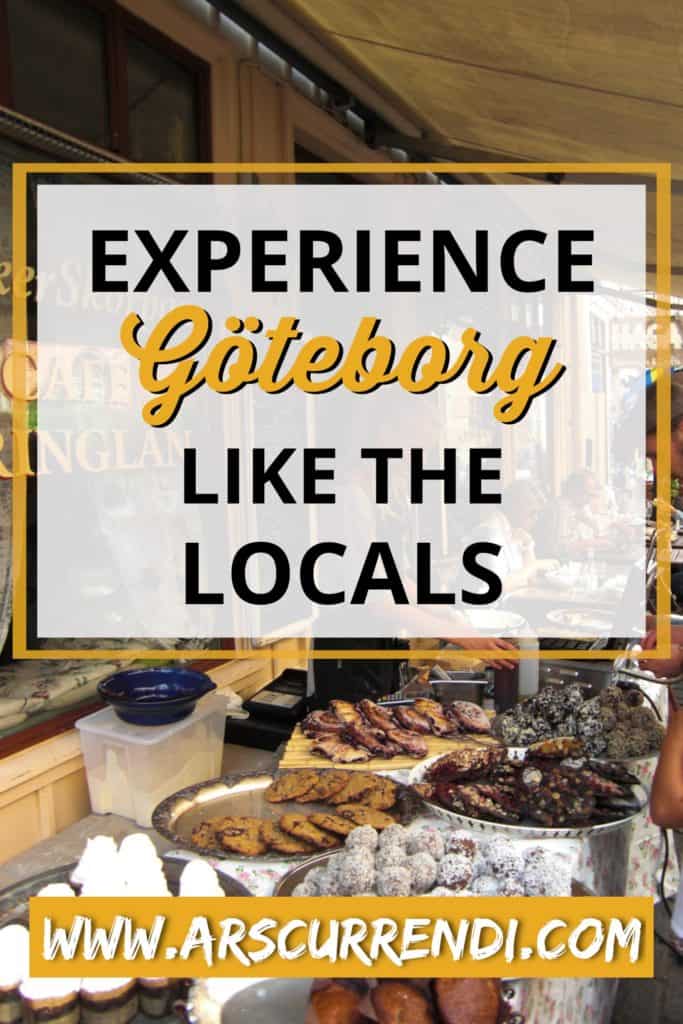
As many of you may or may not know, I’m taking a semester abroad to study in Spain. I’ll be there between September and January, which means I’ll probably end up having some time to explore every corner of Iberia. That being said, let me walk you through the things I want to visit in Spain next year.
As I’m leaving for Spain in less than a month, I think it’s the perfect time to share this post with you guys. This semester abroad is going to be a huge thing and I’m looking forward to it so much. I just can’t wait to start living in Spain by myself!
Of course, not everything I want to see is in Spain itself. However, the majority of my Semester Abroad Bucket List is made up of Spanish locations. With that in mind, I’ll divide this list into two parts: Spain and Not Spain.
Let’s take a look!
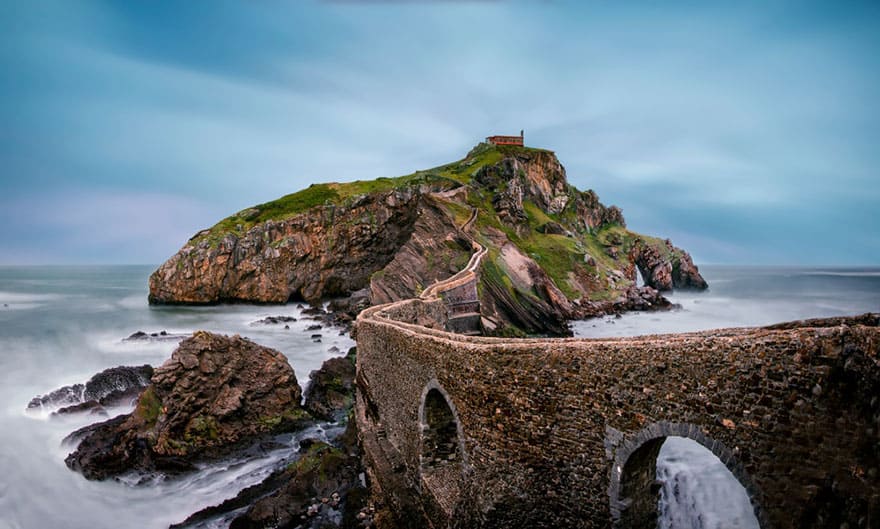
Picture by Pedro Jarque
You weren’t expecting the first entry of my bucket list to be anything other than Madrid, Barcelona or Valencia, right? Well, here it is anyway. Admittedly, the chances of you having heard of Gaztelugatxe before are very slim. So, allow me to explain.
Gaztelugatxe is a tiny island along the northern coast of Spain (Basque Country). The only thing connecting it to mainland Spain is a man-made bridge (that looks amazing, by the way).
I saw a picture of this on a Windows login screen background, and the scenery around the island impressed me so much that I made it one of my top priorities to see Gaztelugatxe in real life one day.
I’m probably going to end up combining a visit to the island with a day or two in Bilbao.
Fun fact: HBO used Gaztelugatxe as a filming location for some scenes in season 7 of Game of Thrones.
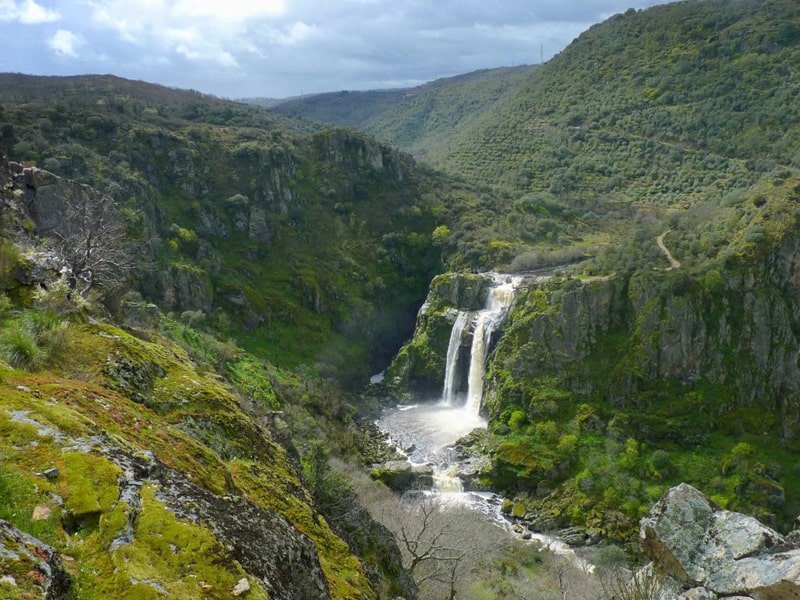
Here comes another name you’ve never heard in your life, and you’ll probably never hear it again after reading about it here. What is Pozo de los Humos and why the hell do I want to see it?
Well, the primary reason why I want to go to Pozo de los Humos is because it’s relatively close to where I’m going to be studying. Moreover, I’m a sucker for nature reserves and waterfalls, so it seems illogical to live about half an hour away of this waterfall for a semester and not visit it.
Fun fact: Pozo de los Humos translates to the smoking waterfall in English.
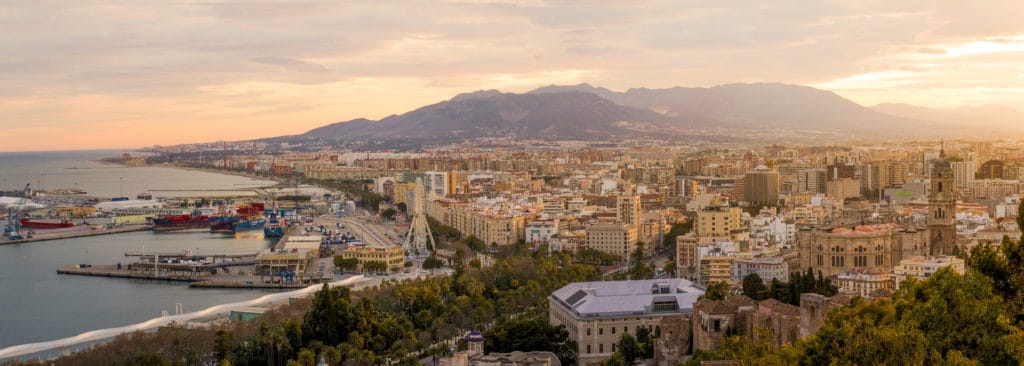
Photo by Adrianna Calvo (Pexels)
As the semester abroad is obligatory for my classmates and myself, all of us are going on an adventure next year. Aside from a couple of friends, most of us are going to various locations in Spain. Within that group, the majority of students is going to study at/around the southern coast of Spain (Málaga, Granada, Huelva, Sevilla, …).
It would surprise me if I managed to go half a year without visiting my friends down in the south. And that’s why this entry is on my bucket list.
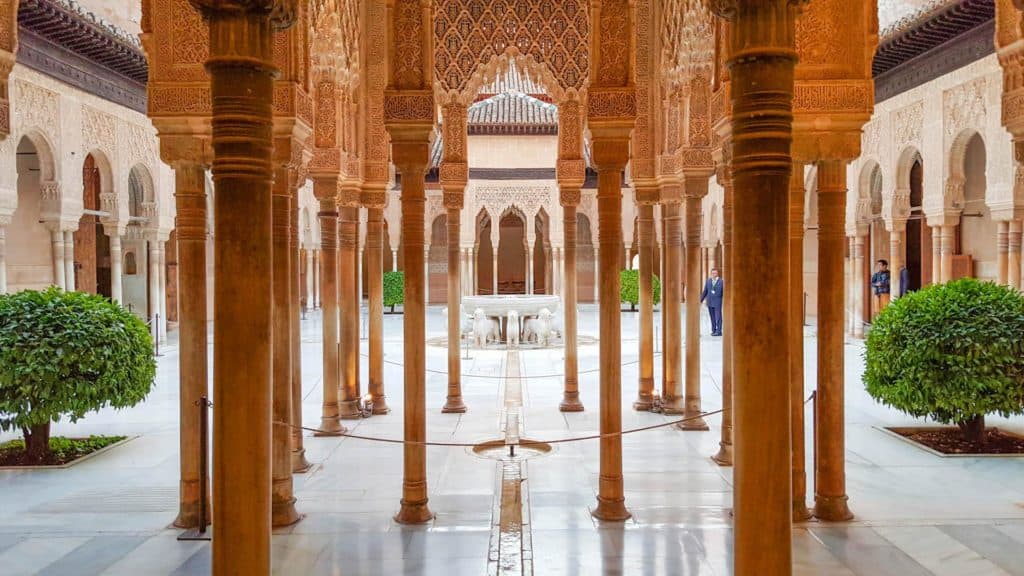
Photo by Geoffrey Morrison
Last year, we had a course about Spanish cultural history. The professor taught us about the history of Spain – which was interesting, but very irritating to study – and he got me hooked on the beauty of old Spanish buildings.
The one building I was most impressed with was the Alhambra. I would honestly travel halfway across the country to get a glimpse of this magnificent piece of ancient architecture (well, not really ancient, but you catch my drift).
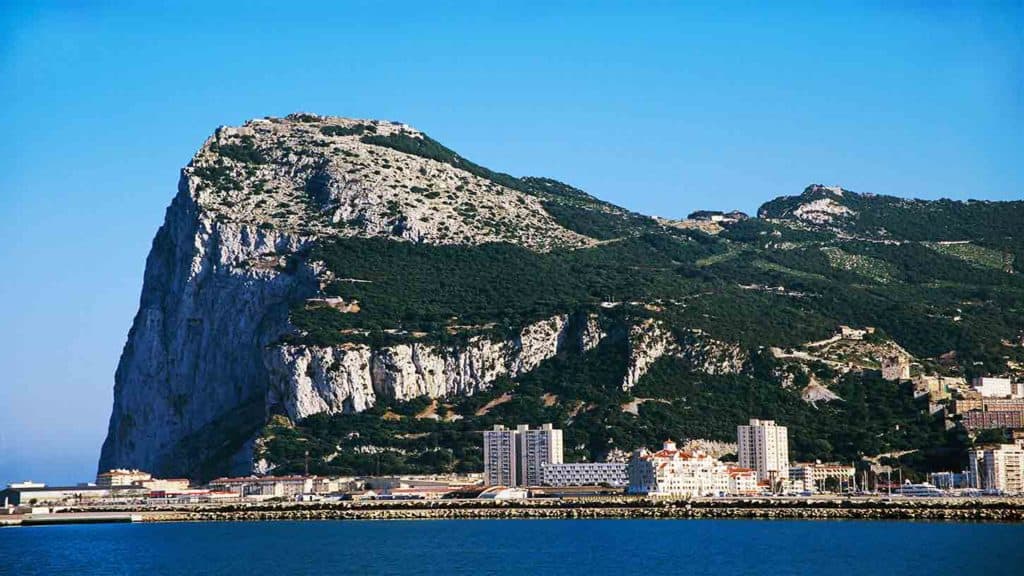
I’ve been waiting to visit Gibraltar for years now, but I’ve never found it to be the right time. If I’m going to do this, I’m going to have to do it now. There’s never going to be a more perfect time to check out the tiny British territory at the end of Spain.
I imagine that Gibraltar would be a perfect place to spend a day and hang out some time.

Photo by Digitalwunder (Pixabay)
Morocco is another country I’ve wanted to visit since I was a little kid. For a typical kid from Belgium, it’s something of a childhood dream. I might get to make that dream come true next year.
I can’t wait to try Moroccan cuisine, ride a camel and stroll through beautiful cities. Another thing I can’t wait to do is try out my very first passport, as I’ve never been outside of Europe.
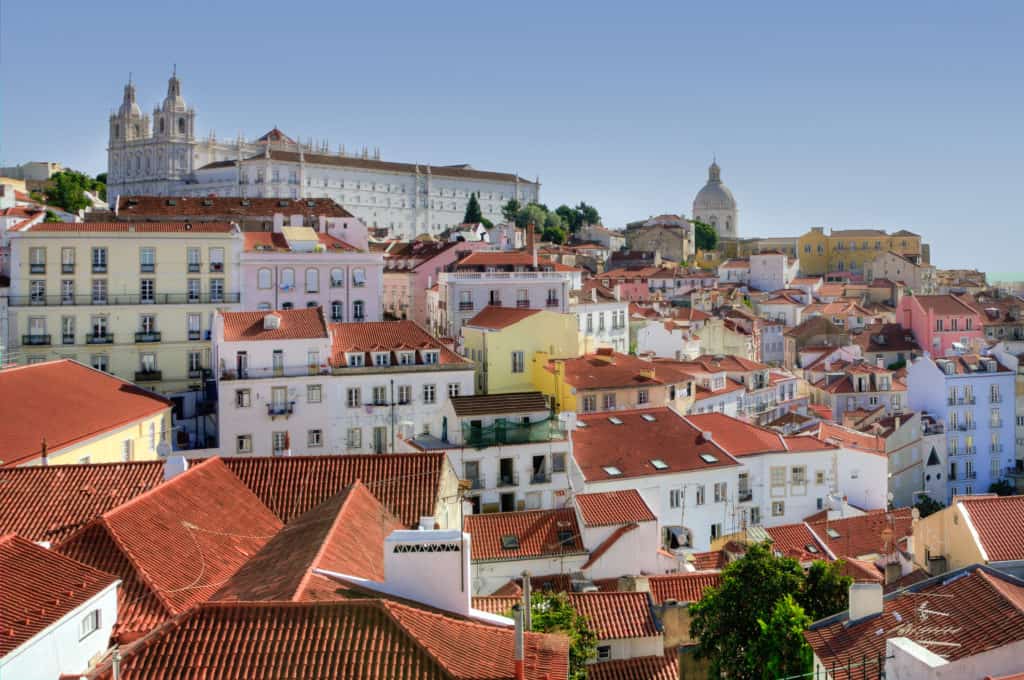
Picture by Peter Heeling (Skitterphoto)
Seeing as I’m going to be spending half a year living right next to the Spanish-Portuguese border, I might as well hop over into the other side. It would be a pity to let all of that Portuguese beauty go unseen, wouldn’t it?
I’ve been to Portugal before and absolutely loved it, so why wouldn’t I love it again next year?
Have you ever been to any of these destinations? What did you think of them? Let me know in the comments!
As always, thank you very much for reading!
-S
Design by NXNW.